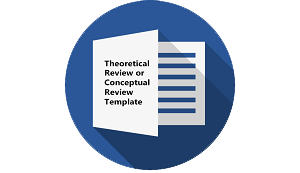Idiosyncrasies of Cultural Arts Education, Heutagogy, and Online Learning during the COVID-19 Pandemic in Indonesia
DOI:
https://doi.org/10.30957/cendekia.v14i2.624Keywords:
idiosyncrasy, arts and culture education, heutagogy, online learning, COVID-19 in IndonesiaAbstract
This study tries to explore the origins of online learning problems in art and culture subjects in junior high schools. Furthermore, from the exploration, it is continued by understanding the idiosyncrasy that occurs in online learning and the concept of heutagogy in arts and culture education at the junior high school level. The research method is mixed-method, prioritizing qualitative aspects that are assisted by questionnaires in data collection. Data were collected using an online questionnaire through the Google Form platform for junior high school students in Pasuruan, East Java. Afterward, the data were analyzed with analytical descriptive words to see the idiosyncrasy of art and culture education with heutagogy in this COVID-19 pandemic. The results showed that the heutagogical model is a model that is deemed necessary to be developed in the era of online learning going forward. When the COVID-19 pandemic took place, the use of IT technology had the power to tailor cultural arts education for each student in accordance with the development of his generation.
Downloads
References
Basrowi, B. (2019). Pemanfaatan Media Sosial oleh Tenaga Kerja Indonesia dalam Proses Pendidikan Anak menggunakan Metode Belajar Long-Distance Relationship. Cendekia: Jurnal Pendidikan dan Pembelajaran, 13(1), 1-18. https://doi.org/10.30957/cendekia.v13i1.59
Bhoyrub, J., Hurley, J., Neilson, G. R., Ramsay, M., & Smith, M. (2010). Heutagogy: An alternative practice based learning approach. Nurse Education in Practice, 10(6), 322–326. https://doi.org/10.1016/j.nepr.2010.05.001
Black, J., & Browning, K. (2011). Creativity in Digital Art Education Teaching Practices. Art Education, 64(5), 19–24, 33–34.
Bliuc, A. M., Ellis, R. A., Goodyear, P., & Piggott, L. (2011). A blended learning Approach to teaching foreign policy: Student experiences of learning through face-to-face and online discussion and their relationship to academic performance. Computers and Education, 56(3), 856–864. https://doi.org/10.1016/j.compedu.2010.10.027
Bourelle, T., Bourelle, A., & Rankins-Robertson, S. (2015). Teaching with Instructional Assistants: Enhancing Student Learning in Online Classes. Computers and Composition, 37, 90–103. https://doi.org/10.1016/j.compcom.2015.06.007
Brinkley-Etzkorn, K. E. (2018). Learning to teach online: Measuring the influence of faculty development training on teaching effectiveness through a TPACK lens. Internet and Higher Education, 38(November 2016), 28–35. https://doi.org/10.1016/j.iheduc.2018.04.004
Canţer, M. (2012). E-heutagogy for lifelong e-learning. Procedia Technology, 1, 129–131. https://doi.org/10.1016/j.protcy.2012.02.025
Carpenter, J. P., & Green, T. D. (2017). Mobile instant messaging for professional learning: Educators’ perspectives on and uses of Voxer. Teaching and Teacher Education, 68, 53–67. https://doi.org/10.1016/j.tate.2017.08.008
Center for Disease Control and Prevention (CDC). (2020). What You Need to Know about Coronavirus Disease 2019 (COVID-19). In Choice Reviews Online. https://doi.org/10.5860/choice.48-1502
Chauvet, P., Botchorishvili, R., Curinier, S., Gremeau, A. S., Campagne-Loiseau, S., Houlle, C., Canis, M., Rabischong, B., & Bourdel, N. (2020). What Is a Good Teaching Video? Results of an Online International Survey. Journal of Minimally Invasive Gynecology, 27(3), 738–747. https://doi.org/10.1016/j.jmig.2019.05.023
Colman, A. (2018). Net.art and Net.pedagogy : Introducing Internet Art to the Digital Art Curriculum. Studies in Art Education, 46(Technology Issue), 61–73.
Creswell, J. W. (2010). Research Design Pendekatan Kualitatif, Kuantitatif, Dan Mixed. Pustaka Pelajar.
Csikszentmihalyi, M. (2014). Applications of Flow in Human Development and Education. Springer. https://doi.org/10.1007/978-94-017-9094-9_2
Damary, R., Markova, T., & Pryadilina, N. (2017). Key Challenges of On-line Education in Multi-cultural Context. Procedia - Social and Behavioral Sciences, 237(June 2016), 83–89. https://doi.org/10.1016/j.sbspro.2017.02.034
Denzin, N. K., & Lincoln, Y. S. (Eds.). (2018). The SAGE Handbook of Qualitative Research (Fifth Edit). Sage Publications. https://doi.org/10.1007/s11229-017-1319-x
Ellis, K., & Lindley, L. C. (2020). A virtual children’s hospice in response to COVID-19: The Scottish experience. Journal of Pain and Symptom Management. https://doi.org/10.1016/j.jpainsymman.2020.05.011
Gomis-Porqueras, P., & Rodrigues-Neto, J. A. (2018). Teaching technologies, attendance, learning and the optimal level of access to online materials. Economic Modelling, 73(May 2017), 329–342. https://doi.org/10.1016/j.econmod.2018.04.009
Goodsett, M. (2020). Best practices for teaching and assessing critical thinking in information literacy online learning objects. Journal of Academic Librarianship, October 2019. https://doi.org/10.1016/j.acalib.2020.102163
Green, L. W., Mullen, P. D., & Maloney, S. (1984). Large-Scale Campaigns in Health Education. Health Education & Behavior, 11(3), 221–223. https://doi.org/10.1177/109019818401100301
Hanson, C., West, J., Neiger, B., Thackeray, R., Barnes, M., & Mcintyre, E. (2011). Use and Acceptance of Social Media among Health Educators. American Journal of Health Education, 42(4), 197–204.
Hartikainen, H., Iivari, N., & Kinnula, M. (2019). Children’s design recommendations for online safety education. International Journal of Child-Computer Interaction, 22. https://doi.org/10.1016/j.ijcci.2019.100146
Heard, M. (2014). Repositioning curriculum design: Broadening the who and how of curricular invention. College English, 76(4), 315–336.
Horsfield, J. (2018). Fun as learning - Play as progress. January.
Janse van Rensburg, E. S. (2018). Effective online teaching and learning practices for undergraduate health sciences students: An integrative review. International Journal of Africa Nursing Sciences, 9(July), 73–80. https://doi.org/10.1016/j.ijans.2018.08.004
Johnston-Goodstar, K., Richards-Schuster, K., & Sethi, J. K. (2014). Exploring Critical Youth Media Practice: Connections and Contributions for Social Work. Social Work (United States), 59(4), 339–346. https://doi.org/10.1093/sw/swu041
Kearns, L. R. (2016). The experience of teaching online and its impact on faculty innovation across delivery methods. Internet and Higher Education, 31, 71–78. https://doi.org/10.1016/j.iheduc.2016.06.005
Kemkes. (2020). Tentang Novel Coronavirus (NCOV). https://www.kemkes.go.id/resources/download/info-terkini/COVID-19/TENTANG NOVEL CORONAVIRUS.pdf
Ki Hadjar Dewantara. (2004). Karya Ki Hadjar Dewantara Bagian I: Pendidikan. Majelis Luhur Persatuan Taman Siswa.
Kim, J., Song, H., & Luo, W. (2016). Broadening the understanding of social presence: Implications and contributions to the mediated communication and online education. Computers in Human Behavior, 65, 672–679. https://doi.org/10.1016/j.chb.2016.07.009
Kumar, D., Malviya, R., & Sharma, P. K. (2020). Corona Virus: A Review of COVID-19. Eurasian Journal of Medicine and Oncology, 4(2), 8–25. https://doi.org/10.14744/ejmo.2020.51418
Law, K. M. Y., Geng, S., & Li, T. (2019). Student enrollment, motivation and learning performance in a blended learning environment: The mediating effects of social, teaching, and cognitive presence. Computers and Education, 136(March), 1–12. https://doi.org/10.1016/j.compedu.2019.02.021
Leavy, P. (2017). Research Design: Quantitative, Qualitative, Mixed Methods, Arts-Based, and Community-Based Participatory Research Approaches. The Guilford Press.
Li, X., Chen, Q., Fang, F., & Zhang, J. (2016). Is online education more like the global public goods? Futures, 81, 176–190. https://doi.org/10.1016/j.futures.2015.10.001
Lin, T.-B., Chen, V., & Chai, C. S. (Eds.). (2015). New Media and Learning in the 21st Century; A Social-Cultural Perspektive. Springer. https://doi.org/10.1007/978-981-287-326-2
Lot, M., Hamblin, M. R., & Rezaei, N. (2020). COVID-19 : Transmission, prevention, and potential therapeutic opportunities. Clinica Chimica Acta, 508(May), 254–266. https://doi.org/10.1016/j.cca.2020.05.044
Lun, M. W. A. (2020). Informational Interview: Broadening Helping Field Professional Students’ Perception of Employment Opportunities in the Real World. Journal of Social Service Research, 46(1), 124–132. https://doi.org/10.1080/01488376.2018.1532943
Lune, H., & Berg, B. L. (2017). Qualitative Research Methods for the Social Sciences (Ninth edit). Pearson.
Milczynski, K. a. (2011). Literature Review: Effectiveness of Gaming in the Classroom. Michigan State University, 1–14. papers3://publication/uuid/59C82B9F-58EA-4E14-AF31-F4D5501451D9
Moher, D., Liberati, A., Tetzlaff, J., Altman, D., & The PRISMA Group. (2009). Preferred Reporting Items for Systematic Reviews and Meta-Analyses: The PRISMA Statement. PLoS Med, 6(7). https://doi.org/10.1371/journal.pmed1000097
Moran, J. (2002). Interdisciplinarity. Routledge.
Msila, V., & Setlhako, A. (2012). Teaching (still) Matters: Experiences on Developing a Heutagogical Online Module at UNISA. Procedia - Social and Behavioral Sciences, 69(Iceepsy 2012), 136–142. https://doi.org/10.1016/j.sbspro.2012.11.392
Mukharom, M., & Aravik, H. (2020). Kebijakan Nabi Muhammad Saw Menangani Wabah Penyakit Menular dan Implementasinya dalam Konteks Penanggulangan Coronavirus Covid-19. SALAM: Jurnal Sosial Dan Budaya Syar-I, 7(3). https://doi.org/10.15408/sjsbs.v7i3.15096
Piliang, Y. A. (2019). Seni, desain, dan kebudayaan dalam spirit revolusi industri 4.0. Prosiding Seminar Nasional Desain Dan Arsitektur (SENADA), 2, 1–9.
Radianti, J., Majchrzak, T. A., Fromm, J., & Wohlgenannt, I. (2020). A systematic review of immersive virtual reality applications for higher education: Design elements, lessons learned, and research agenda. Computers and Education, 147(December 2019). https://doi.org/10.1016/j.compedu.2019.103778
Rasheed, R. A., Kamsin, A., & Abdullah, N. A. (2020). Challenges in the online component of blended learning: A systematic review. Computers and Education, 144(March 2019). https://doi.org/10.1016/j.compedu.2019.103701
Read, H. (1970). Education Through Art. Faber and Faber.
Richert, R. A., Robb, M. B., Smith, E. I., Development, S. C., Healthy, R., January, C., Richert, R. A., Robb, M. B., & Smith, E. I. (2011). Media as Social Partners: The Social Nature of Young Children’s Learning From Screen Media. Child Development, 82(1), 82–95. https://doi.org/10.1111/j.l467-8624.2010.01542.x
Rivers, T. M. (2016). Ten Essentials for Character Education. The Journal of General Education, 53(3), 247–260.
Sampurno, M. B. T., & Camelia, I. A. (2020). Art and Fun Digital Learning for Children with Special Needs: A Case Study on Applying Art as a Learning Technology. 380(SoSHEC), 175–180. https://doi.org/10.2991/soshec-19.2019.38
Sampurno, M. B. T., Kusumandyoko, T. C., & Islam, M. A. (2020). Budaya Media Sosial, Edukasi Masyarakat, dan Pandemi COVID-19. SALAM: Jurnal Sosial Dan Budaya Syar-I, 7(5). https://doi.org/https://doi.org/10.15408/sjsbs.v7i5.15210
Schejbal, D. (2017). General Education Reconsidered. The Journal of General Education, 66(3–4), 217–234. https://doi.org/10.5325/jgeneeduc.66.3-4.0217
Scripps Research Institute. (2020). COVID-19 coronavirus epidemic has a natural origin. Science Daily. https://www.sciencedaily.com/releases/2020/03/200317175442.htm
Shkedi, A. (2019). Introduction to Data Analysis in Qualitative Research. Springer International Publishing.
Slota, M., McLaughlin, M., Bradford, L., Langley, J. F., & Vittone, S. (2018). Visual intelligence education as an innovative interdisciplinary approach for advancing communication and collaboration skills in nursing practice. Journal of Professional Nursing, 34(5), 357–363. https://doi.org/10.1016/j.profnurs.2017.12.007
Solikhah, I. (2014). Paradigma Baru Pembelajaran Bahasa dan Resistensi Masyarakat Terhadap Perubahan. Cendekia: Jurnal Pendidikan dan Pembelajaran, 8(2), 151-168. https://doi.org/10.30957/cendekia.v8i2.60
Somekh, B. (2006). Action Research : a Methodology for Change and Development. Open University Press.
Sugiarta, A. N. (2007). Pengembangan Model Pengelolaan Program Pembela-jaran Kolaboratif Untuk Kemandirian Anak Jalanan Di Rumah Singgah (Studi Terfokus di Rumah Singgak Kota Bekasi). Universitas Pendidikan Indonesia.
Sugiyono. (2011). Metode Penelitian Kombinasi. Alfabeta.
Sukarsih, S. (2016). Pengembangan Materi Ajar Ekosistem untuk SMP menggunakan Pendekatan Sains Teknologi Masyarakat dan Tim Hijau Sekolah.Cendekia: Jurnal Pendidikan dan Pembelajaran, 10(1), 67-78. https://doi.org/10.30957/cendekia.v10i1.83
Tashakkori, A., & Creswell, J. (2008). Mixed Methodology Across Disciplines. Journal Of Mixed Methods Research, 2(1), 1–5.
Tobaiqy, M., Qashqary, M., Al-Dahery, S., Mujallad, A., Hershan, A. A., Kamal, M. A., & Helmi, N. (2020). Therapeutic management of patients with COVID-19 : a systematic review. Infection Prevention in Practice, May. https://doi.org/10.1016/j.infpip.2020.100061
Veal, A. J. (2017). Research Methods for Leisure and Tourism. Pearson Education Limited.
Versteijlen, M., Perez Salgado, F., Janssen Groesbeek, M., & Counotte, A. (2017). Pros and cons of online education as a measure to reduce carbon emissions in higher education in the Netherlands. Current Opinion in Environmental Sustainability, 28, 80–89. https://doi.org/10.1016/j.cosust.2017.09.004
Williams, M. K. (2017). John Dewey in the 21 st Century. Journal of Inquiry & Action in Education, 9(1), 91–102.
World Health Organization. (2020). Coronavirus. https://www.who.int/health-topics/coronavirus#tab=tab_1
Yunus, N. R., & Rezki, A. (2020). Kebijakan Pemberlakuan Lock Down Sebagai Antisipasi Penyebaran Corona Virus Covid-19. SALAM: Jurnal Sosial Dan Budaya Syar-I, 7(3). https://doi.org/10.15408/sjsbs.v7i3.15083
Zahrotunnimah, Z. (2020). Langkah Taktis Pemerintah Daerah Dalam Pencegahan Penyebaran Virus Corona Covid-19 di Indonesia. SALAM: Jurnal Sosial Dan Budaya Syar-I, 7(3). https://doi.org/10.15408/sjsbs.v7i3.15103
Zhou, W. (Ed.). (2020). Coronavirus Prevention Handbook. Hubei Science and Technology Press.
Downloads
Published
How to Cite
Issue
Section
License
Authors who publish with this journal agree to the following terms:
- Authors retain copyright and grant the journal right of first publication with the work simultaneously licensed under a Creative Commons Attribution-ShareAlike 4.0 International License that allows others to share the work with an acknowledgement of the work's authorship and initial publication in this journal.
- Authors are able to enter into separate, additional contractual arrangements for the non-exclusive distribution of the journal's published version of the work (e.g., post it to an institutional repository or publish it in a book), with an acknowledgement of its initial publication in this journal.
- Authors are permitted and encouraged to post their work online (e.g., in institutional repositories or on their website) prior to and during the submission process, as it can lead to productive exchanges, as well as earlier and greater citation of published work (See The Effect of Open Access).












